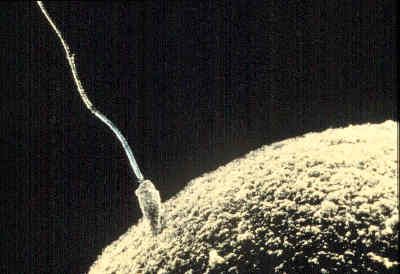-
 PCI
PCI
-
 Stenosis
Stenosis
-
 Pink moon
Pink moon
-
 Tiagabine
Tiagabine
-
 Aneuploidy
Aneuploidy
-
 Hydrometeor
Hydrometeor
-
 Exoskeleton
Exoskeleton
-
 Hotspot
Hotspot
-
 Factor X inhibitor
Factor X inhibitor
-
 Mineralogical class
Mineralogical class
-
 Reflecting power
Reflecting power
-
 Moonquake
Moonquake
-
 Cave pearls
Cave pearls
-
 Extended area
Extended area
-
 Threading
Threading
-
 Mars
Mars
-
 Aldohexose
Aldohexose
-
 Cumulonimbus
Cumulonimbus
-
 Plasma substitutes
Plasma substitutes
-
 Chylomicrons
Chylomicrons
-
 Solar corona
Solar corona
-
 Canada-France-Hawaii observatory
Canada-France-Hawaii observatory
-
 Big Rip
Big Rip
-
 Kliper
Kliper
-
 CSTB
CSTB
-
 Estrogen
Estrogen
-
 Hypersaline water
Hypersaline water
-
 Trap
Trap
-
 Hydrogen sulphide
Hydrogen sulphide
-
 GSTP
GSTP
Gamete
A gamete is a sex cell that enables sexual reproduction. The word gamete comes from the ancient Greek and means "spouse".
Structure of the gamete
A gamete is a male or female germ cell (reproductive cell) produced by gametogenesis in the gonads. During this production, the primordial germ cells which have a diploid set of chromosomes (i.e. 46 in men), undergo meiosis which halves the number of chromosomes and they become haploid (23 chromosomes).
In men, the male gamete, or spermatozoa, looks like a small oval cell with a mobile tail which it uses to move about. The female gamete, or ovum, is far larger as it contains many nutrients.
Function of the gamete
The function of the gametes is to fuse to give birth to a new individual with a unique genetic heritage.
Arbitrary loss of a chromosome from each pair allows the two gametes to fertilise each other, fusion of which produces an egg (zygote) which, like its parents, has 46 chromosomes.
 The gametes are the reproductive cells that undergo fertilisation. © DR
The gametes are the reproductive cells that undergo fertilisation. © DR
Latest
Fill out my online form.



